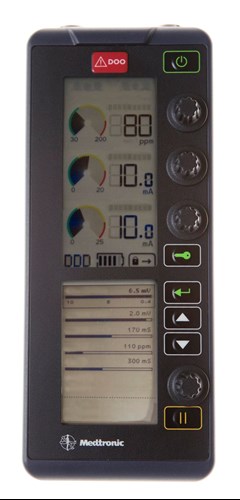Confirmation
Download PDF
Open All
PR34: Transvenous Pacing
Applicable To
Introduction
Transvenous pacing is a temporary method of endocardial pacing via central venous access. Although an invasive procedure, it is more comfortable than transcutaneous pacing and the wires are less prone to displacement during conveyance.
Indications
- Maintain transvenous pacing if initiated at the sending facility
- Life-saving treatment for bradyarrhythmias unresponsive to medications, with symptoms or severe hemodynamic impairment
- Prolonged conveyance given the risks of sedation for patients being transcutaneously paced where the risks outweigh those of transvenous pacing
Contraindications
- Bradycardia that is well-tolerated
- Myocardial infarction being treated with a thrombolytic agent and is being aggressively treated with anticoagulant or antiplatelet agents
- Inability to maintain cardiac monitoring
- Prosthetic tricuspid valve
- Severe hypothermia
Exercise caution in patients whose bradycardia is associated with correctable causes.
Procedure
- The CVC, either internal jugular or subclavian, with a cordis is in situ.
- The pacing wires have been sheathed, floated, and placed.
- The sending facility has initiated the transvenous pacing.
- TVP settings:
- Most modern generators have a locking mechanism to reduce the risk of accidental changes. This is usually a button that looks like a key or a lock -- unlock this to change pacing settings.
- Set the rate to maintain an appropriate cardiac output for the patient's needs.
- There are two methods of setting current (measured in mA) to establish capture:
- Start at 10-20 mA and decrease the current until capture is lost, then increase by 1 mA increments to maintain capture.
- Set the output at 2 to 3 times the pacing threshold.
- Sensing is measured in mV. If the patient has no intrinsic rate, the sensitivity is turned to the least sensitive value. If the patient has intrinsic activity, set the sensitivity to allow for normal beats to be sensed and pacing to be inhibited. The sensitivity setting on the generator is decreased to allow for a greater sensitivity threshold (and vice versa).
- Ensure fluid is running through the cordis appropriately.
- Gather the appropriate equipment:
- Generator
- Spare batteries
- Pacing wires
- Return address of the sending hospital
- Ensure the locking mechanism of closed and mark the depth of the wires.
- Ensure the pacemaker has electrical and mechanical capture.
Example of pacemaker generator:

Notes
Troubleshooting:
- Check the rate
- Check for capture:
- Generator failure
- Displaced or broken wire
- Battery failure
- Underlying clinical condition
- Check pacing:
- Current (mA)
- Sensitivity (mV)
- Battery
- Displaced wire
- Check sensitivity:
- Under-sensed
- Over-sensed
- Bleeding
- Air or pulmonary embolism
- Pneumothorax